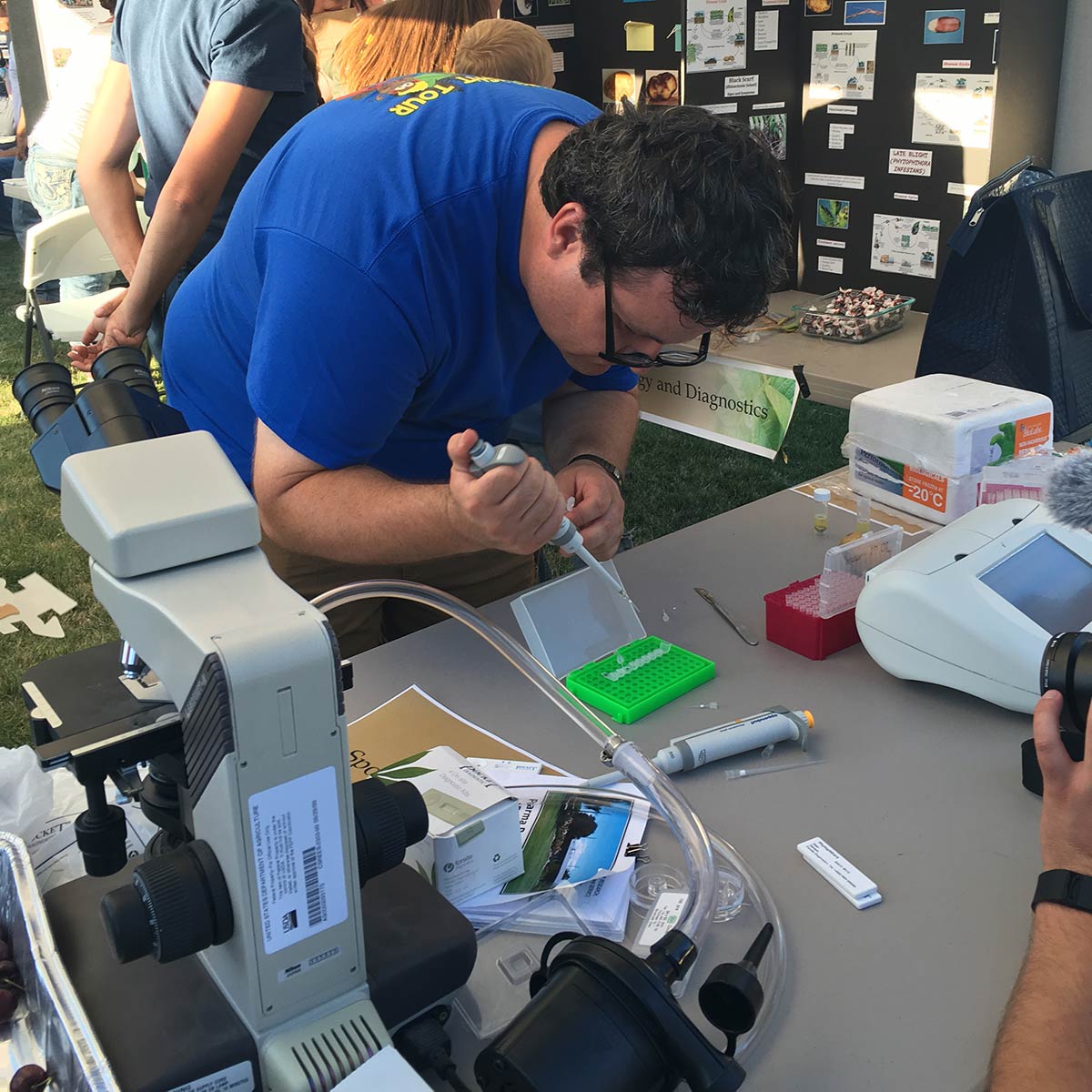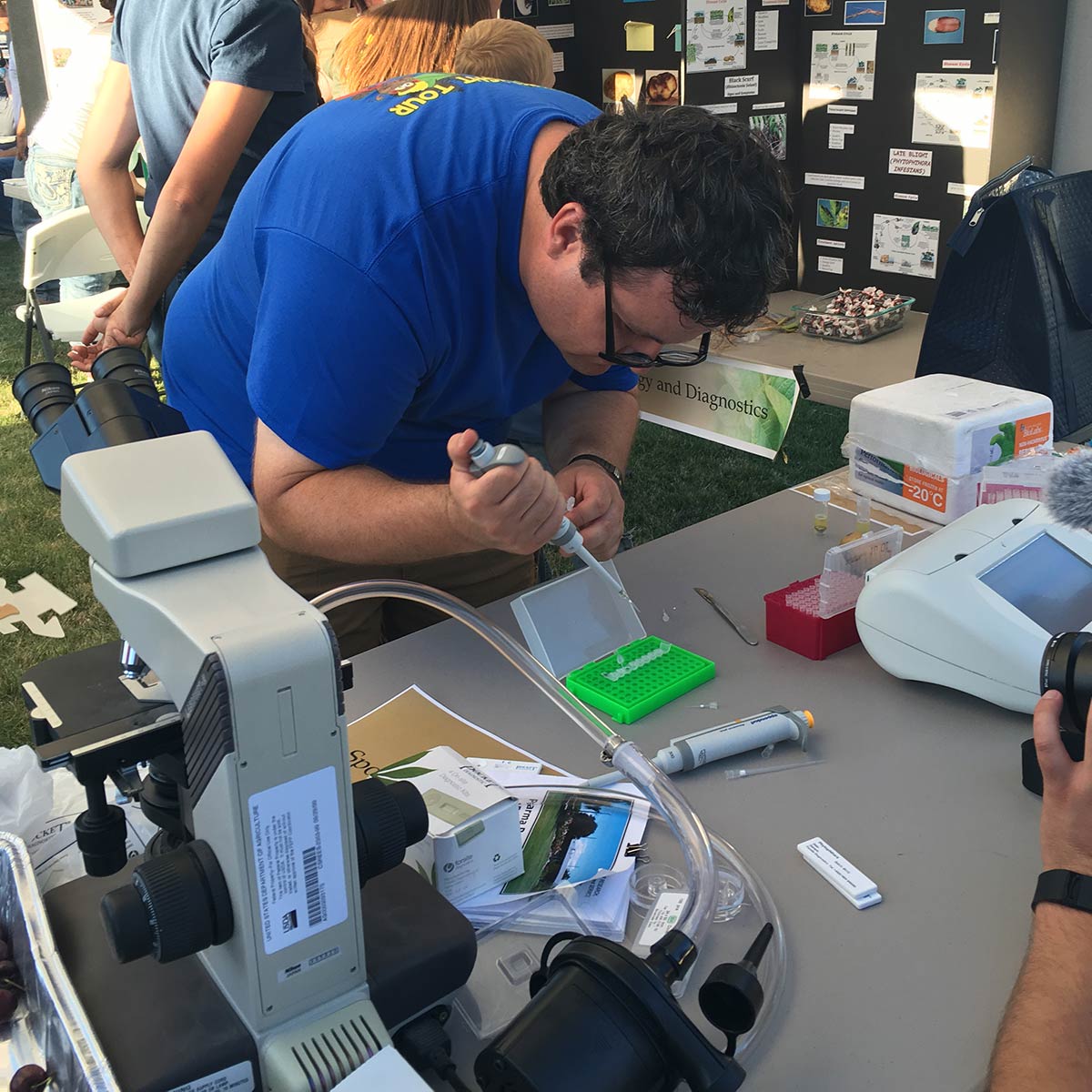Detecting Crop Diseases
Soil- and air-borne diseases cause serious problems for Idaho farmers each season. Parma Research and Extension Center-based plant pathologist James Woodhall is developing new technology to help keep crops safe.
“There has been a lot of interest, more than I ever expected,” he said. “It’s advanced very quickly with funding and direct support from the industry.”
To address soil-borne diseases, he is using sophisticated soil DNA testing technology that offers rapid diagnoses of problems.
In onions, pink root can cause extensive damage, reducing yields by up to 40 percent in severe outbreaks.
Potatoes are affected by many soil-borne diseases including black dot, powdery scab, Rhizoctonia, Pythium leak, pink rot and Verticillium. Some destroy tubers in the field, some in storage.
New air and soil testing methods can inform growers when to apply pesticides to prevent diseases causing serious damage. This can reduce the number of applications because growers are treating only when a pathogen is known to be present.
Tests can detect the pathogen before disease symptoms appear, allowing earlier and more effective pesticide applications.
The use of new detection technology makes possible rapid and relatively inexpensive tests that yield specific, accurate results.
Woodhall’s lab typically processes soil samples of 250 grams, about 9 ounces, helping farmers test multiple locations in fields to identify hot spots.
With soil-borne diseases, the damage typically occurs below ground, “out of sight, out of mind,” Woodhall said.
With air-borne diseases, growers usually can spot problems as they begin to develop as symptoms appear on leaves.
To help growers combat airborne fungal diseases spread by spores, Woodhall and colleagues are testing air samplers across Idaho.
The air sampling helps growers anticipate problems before they occur by tracking the abundance of spores. Increasing spore levels provide a powerful early warning.
More work remains, he said, but spore abundance in air samples may provide an accurate indication of when growers should act.









